Liquor
Looking for Fun Bachelorette Party Bartenders Near Philadelphia?
There’s Something for Everyone
With so many delicious drinks out there, there’s always something for everyone when you invite King’s Cabinet to bartend your next occasion. We’re also excited to host local private wine tours and group bartending classes throughout the region.
Brandy
Return of the Versatile Cognac
There’s something about cold weather that makes you want to warm up with a stiff drink. So, go on, drink up. But just make sure when you do, you do it the right way by seeking out a high-quality and complex spirit, such as Cognac. So, if you are among one of those fun loving individuals who appreciate the pleasures of sipping some fine cognac then the following lines are written specially for you.
The term “Cognac” refers to Brandy which has been made from the Trebbiano or Ugni Blanc grapes in the Cognac region of France. Despite its boozy inspiration, Cognac Brandy was originally invented by the Dutch in the early 16th century by distilling and aging wine. Furthermore, the Cognac region is further separated into six sub-regions which are based primarily on the makeup of the soil, for instance, Grande Champagne, Borderies, Petite Champagne, Bons Bois, Bois Ordinaries and Fine Bois. Cognac is usually distilled by March following the grape harvest in early October, and aged in French oak barrels for up to two years, though there is rarely an age statement given on the bottle.
An interesting thing about Cognacs is that the vast majority of cognacs is blended by master blenders and may contain upwards of 240 different contributing cognacs. And it is the master blender’s job to ensure the consistency in the blended Cognac product. While cognac is technically considered as brandy, there is a slight difference in the manufacturing process of brandy and cognac. The fermentation process of cognac includes turning grape juice into wine; brandy can be prepared for, fermented juices of other fruits like berries. Moreover, after distillation the wine is aged for more than two years to make it cognac. On the other hand the preparation of brandy does not involve any aging process. The freshly distilled wine is called as “heads”. Due to its unpleasant taste, heads is re-distilled along with new wine. The re-distilled and mixed product is called heart. Heart contains 25-30% of alcohol content. The final part is called tails, which mostly consists of impurities, used for joining heads with new wine for re-distillation process.
VS or VSOP or XO…What does it all mean?
Cognacs labeled VS are a minimum of two years, VSOP are a minimum of four years, while Cognac brands, such as, Napoleon and XO have a six year minimum, which is going to be raised to ten years by the year 2016. Cognacs, such as, eau de vie may be single vintage bottling with the year labeled on the bottle. The older Cognac blends are not just further aged versions of younger blends, but also usually separate products. For instance, a certain Cognac brand may compose their VS product primarily of eau de vie, while for their XO products most will come from Grande Champagne. For those who don’t know how to handle it, Cognac is traditionally served in snifters, which are broad, short wine glasses, that allow the Cognac to breathe.
Pairing Cognac with Food
Cognac is known to go extremely well with cream cheeses, which adds to the fullness of its taste. When served chilled, with smoked salmon, the saltiness in the two complements each other extremely well. Flambéing it over the Christmas pudding also works. While serving Cognac chilled, you will lose the aroma, but will gain a syrupy texture, which will be worth it.
The Big Four
The “big four” cognac houses that make up around almost all of the world’s market for Cognac are mainly Remy Martin, Martell, Hennessy and Courvoisier.


Champagne
The Drink of Celebration
With its distinctive pop of its cork, Champagne is by far, the most luxurious and celebrated spirits to come out of Northern France. The rich history of Champagne goes back nearly three hundred years, to the historic Champagne region of France, where it was discovered, or rather, invented by a Benedictine monk, Dom Perignon, who was the chief winemaker of an abbey. The technique he perfected for making sparkling wine was called Method Champenoise, which captured bubbles in the bottle by using the process of double fermentation. A single bottle of Champagne can have as many as forty-nine million bubbles.
Champagne, made from grapes, is famous for its bubbly effervescence which is produced by a chemical reaction between the booze and the bottle. Champagne grapes aka the Black Corinth grape is in fact, the smallest variety of all seedless grapes. But the Black Corinth grape is not the exclusive grape for Champagne, there are also red and green varieties as well, though very uncommon. What makes the Corinth grapes so special is that they have absolutely no seed development at all, as compared with other seedless varieties, which produce seeds that eventually abort.
Technically, it is the only “Sparkling wine” that can be referred to and labeled as Champagne because it is produced in the Champagne region of France. In most parts of the world, it is either referred to as “bubbly” or “sparkling wine.” The Spanish call it Cava, while Italy’s famous bubbles are Prosecco and Moscatod’Asti. And the French themselves refer to all sparkling wines produced outside the region of Champagne as “Cremant”.
Champagne Types
Cognacs labeled VS are a minimum of two years, VSOP are a minimum of four years, while Cognac brands, such as, Napoleon and XO have a six year minimum, which is going to be raised to ten years by the year 2016. Cognacs, such as, eau de vie may be single vintage bottling with the year labeled on the bottle. The older Cognac blends are not just further aged versions of younger blends, but also usually separate products. For instance, a certain Cognac brand may compose their VS product primarily of eau de vie, while for their XO products most will come from Grande Champagne. For those who don’t know how to handle it, Cognac is traditionally served in snifters, which are broad, short wine glasses, that allow the Cognac to breathe.
Champagne Brands
There are several respected Champagne brands around, for example, the premium vintage Champagne brand, Dom Pérignon by Moët et Chandon, which also produces Domaine Chandon. Two of the most famous names which comes to mind today are Moet & Chandon and Nicolas Feuillatte, while some others include, the sturdy Bollinger, Taittinger, Louis Roederer and the luxecuvées from Krug. For the calorie conscious grad, there are 69 calories in 3.5 oz of Prosecco, while Champagne has 87 calories.
The pop of a Champagne bottle sends tingles down the spine of many a many a wine enthusiast. Nowadays, the U.S., Australia, Italy, Spain and New Zealand, all give France a run for its money by producing some fine sparkling wines of their own, which can be bought at highly competitive prices.
Traditional Glass Types for Champagne
Flutes – The tall narrow glasses, with long stem apparently look like a flute. Champagne flutes are commonly used in formal dinners and restaurants.
Tulips – Tulips apparently look flutes, but they have a wider inward rim. Unlike flutes, tulips can capture the flavor of the champagne for a longer period.
Coupes – Also known as champagne saucers, coupes have short stem and wide bowl. They are the oldest type of champagne glasses, but due to large surface area, the aroma and flavor of the champagne can escape way too quickly. This is the reason that coupes were replaced by flutes.
Gin
The Best Crisp Gins in the World
Drinking an ice cold cocktail on a scorching summer’s day is an essential mid-summer ritual for many. Basically, gin is a colorless or pale yellow liquor that is obtained from purified spirits attained from grain mash and flavored with the juniper berry. They can also contain coriander, sage, cassia, nutmeg, rosemary and caraway.
While London Dry style gin is most commonly used throughout the world, it also comes in the malty flavored and full bodied Netherlands types. In addition, there are several other styles of gin that are once again coming into vogue. The following lines are going to be all about the famous gin styles around the world.
Dutch Gin
This style basically represents the first gins that were ever created in Holland in the early 17th century. The beauty of the Dutch variety is that it is infused with both the neutral spirits and the taste of the bready tasting malt wine. Korinwijn is one of the best brands when it comes to obtaining this rare style of Dutch wine, while Oude, Jonge, Glorious Gin and Breuckelen distilling are all good makers of Dutch gin.
London Dry Gin
London dry gin is a neutrally blended spirit which comes paired with botanicals, which are mainly juniper, which is the most commonly distilled gin. The botanicals which are added to the spirit play a secondary role, when it comes to taste, right after the juniper. Some of the most common names of London Dry Gin include Gordon’s, Tanqueray, Bulldog, Beefeater and Boodles.
Navy Strength Gin
The traditional navy strength gin has more than fifty percent alcohol by volume, this is so because Britain’s royal navy demanded a high proof alcohol for their ships. If you’re up for it, try out New York distilling company and Perry’s Tot Navy Strength.
New Western Style Gin
Even though distillers are using an ever increasing amount of juniper berries for their spirits to be considered gin, they are also starting to balance out the juniper with other exotic botanicals, creating gin with flavors that most people would have a problem expecting. Some of these new and different tastes can be found in House Spirits Distillery and Aviation gin, just to name a few.
Old Tom Gin
Often considered as the love child of New Western gin and Dutch gin, the Old Tom Gin recipes include orange flower water and sugar. Although this style is considered extinct, some distillers are trying to bring it back to the limelight. Some of the popular brands include, Hayman’s Old Tom Gin.
Plymouth Dry Gin
With a taste considered earthier than other gins available in the market, Plymouth Dry Gin is distilled with wheat based spirit that gives it that unique taste. Some great brands include, Black Friars Distillery and of course, Plymouth English Gin.
Gin is usually enjoyed in highball glasses, garnished with a lime wedge.

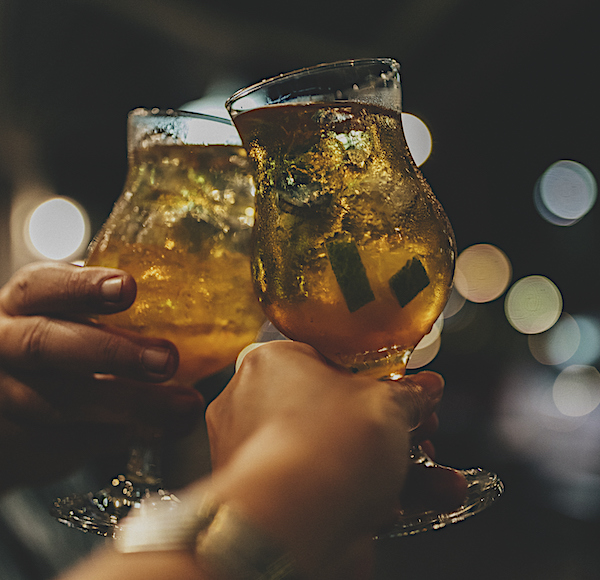
Rum
Tis Ol’ Wonderful Rum
The first distillation of rum was produced by the plantation slaves of Latin America, mainly Brazil, Barbados, Jamaica, and the French West Indies, which is why it is fondly called the taste of the Caribbean. For starters, rum is a hard alcohol which is fermented from sugar. What sets it apart from the other liquors is that the process usually includes the juices of the sugarcane plant, molasses and other such by-products of sugar production. Each of the light, gold, dark and spiced rums have their own distinct characteristics. There are many of styles that make up the rum family.
White or Clear Rum
White rum is clear. It usually has a mild flavor and a lighter body than its gold counterparts. This light rum is mainly used for cocktails which do not have the need for a bold rum flavor. Most white or clear rums are sold at 80 proof. In other words it has 40% alcohol, by volume, which also makes them cheaper than other mature rums. Some important makes include, Mount Gay Silver, Rubi Rey, Flor de Cana Extra Dry and Oronoco, just to name a few.
Dark Rum
Matured in oak barrels for a couple or more years, dark rum has a rich flavor and hues of caramel and copper. It also comes in a range of types, which also includes, mahogany, light golden as well as amber black. Some great examples of dark rum are, Bacardi Select, Santa Teresa Selecto and Cockspur 5.
Black Rum
By far, the darkest and richest of rums are often referred to as black rums. This type is popular for its bold tropical essence, and a balance of popular ingredients which balance the imparting sweet and spicy flavors. Black rums are mainly used to give flavor to cakes, sauces and deserts.
Premium Age Rum
To achieve a superior flavor, many rums are aged in oak barrels for years, they are known as premium age rums. This mature rum is often labeled as ‘Anejo’ in parts of Spain for its smooth, rich and subtle flavor. Because of its rich flavor, it is mainly used in many cocktail recipes as well. Some of the well known premium-aged rums include, Gosling’s Family Reserve, Mount Gay Extra Old and Dorado 15.
Over-Proof Rum
Most rums available in the U.S. have a 40% to 50% alcohol by volume. The variety of rum that contains a higher content of alcohol are referred to as over-proof rum. Due to the restriction in the U.S. on the volume of alcohol present in rum brands, many manufacturers, El Dorado 15, Cruzan 151 and Bacardi 151 produce rums in the 150 proof range.
Rhum Agricole
Similar to the Appellation d’Origine Contrôlée or AOC mark on champagne and cognac, showing that the product bears French certification, Martinique is the only geographic region in the world to have an AOC mark in the rum industry. This rum is distilled to about 70% alcohol, which allows the rum to retain most of its original flavor.
Flavored and Spiced Rum
Many types of flavors and spices infused into rums offer a wide range of interesting and multifarious variations of spirits. Spiced rums offer unique flavors to rum cakes, cocktails and so on. Fruit extracts of exotic fruits such as, citrus, cherry, mint, coconut, pineapple, and other tropical plants and trees add to the luscious tones of rum varieties.
And there you have it, all the varieties of the rums that matter, so what are waiting for? Pick up a snifter, distill your beating hearts and enjoy!
Tequila
Knock Back Some Tequila… Aye Caramba!
Used during rituals some 2,000 years ago, Tequila is a distilled beverage made from the blue agave plant, primarily in the area surrounding the city of Tequila, 65 km northwest of Guadalajara, and in the highlands of the north western Mexican state of Jalisco. The liquor is made by peeling, roasting and crushing the Agave plant, which is then fermented and distilled. While premium tequila is only made up of agave, the cheaper varieties are usually distilled by using both, agave or other sugars. Premium Tequila is usually distilled twice. The two types are generally referred to as highlands and lowlands, but are never mentioned on the label.
One of the main problems of people who buy Tequila is that they choose Tequila based on its popularity, thinking that popularity equals quality. But with Tequila, that is not always the case, which is why people need to explore different brands and get familiar with the different tastes out there. For those who are interested in either grabbing a bottle at a liquor store or having a frozen margarita at the bar, this is for you.
If the label on the bottle doesn’t say 100% agave, it means that the spirit has been blended with artificial flavors, colorings and fillers. These kinds of tequilas do not have a great taste and obviously cannot be considered as pure. When it comes to Tequilas, the small family distilleries often produce more vibrant tastes than the ones that are usually found plastered on billboards.
Joven
These tequilas are also known as suave, gold and abocado, which all imply youth and smoothness. Joven can be made up of 100% agave, but is usually made with 50% mixed tequila.
Blanco
This type is usually bottled right after being distilled, which gives it its clear white color and its name.
Reposado
The first level of aging is usually termed as reposado or ‘rested’. Each distillery is required by the Mexican government to the tequila not be rested for more than twelve months. The tannins and resins that are used in the reposado give it a subtle nuance which distinguishes it from the rest.
Anejo
Anejo, means “vintage”. A whole year of resting produces a spirit which is smoother and more sophisticated in taste. Anejo is usually aged for one to three years, they are darker in color and have a more complex flavor.
Extra Anejo
This classification of tequila has been around for a while now. Extra Anejo or ultra-aged tequila is aged for atleast three years, which makes it so strong that the commercial alcohol must be adjusted by diluting it with water.
Tasting Tequilas
To many of us tequilas are synonymous with shots, but the best way to truly enjoy it is to sip it neat. Tequila is most often served in a narrow shot glass, but can also be found in anything from a snifter, tumbler and long-stemmed Riedel tequila glass. While sipping tequila is always considered as a reasonable option for those who want to experience the subtle flavors, Tequila is best known for its role in Margaritas.
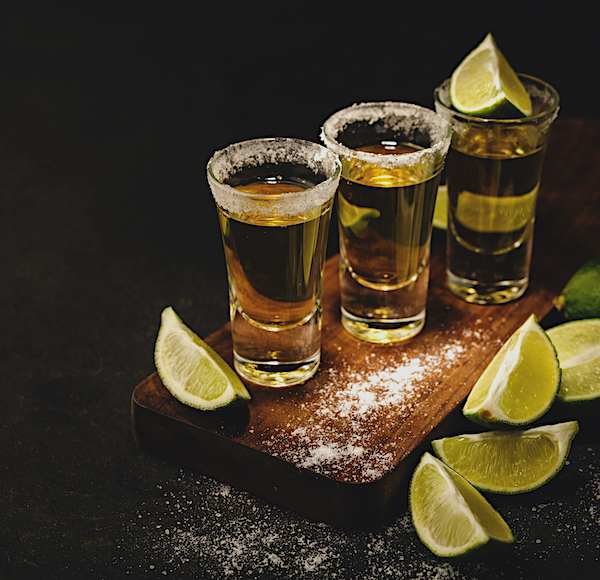
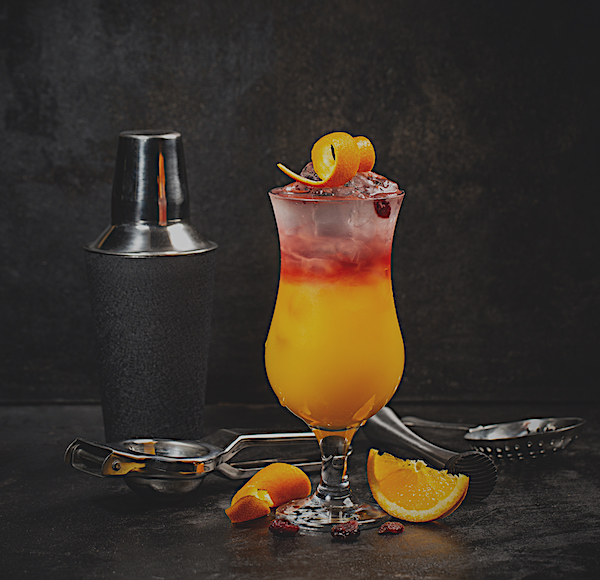
Vodka
Raise a Glass for Vodka: The Beverage of the Gods
Although the true inventor of Vodka is still open to speculation, the countries which did play a major role in its development are namely Russia, Sweden and Poland. Contrary to popular belief, Vodka is not used to confuse people, but rather to journey to a wonderful world of tasty awesomeness. Vodka is a colorless liquor, mostly containing water and alcohol, along with a few of other key ingredients that include, wheat, potato, barley, corn, and molasses.
Voted as one of the top selling liquors, Vodka is probably the fastest popularity gaining liquor. The strange thing about Vodka is that it can be produced from any material which is distilled at or above 190 degrees and bottled at no less than eighty proof. As mentioned earlier, historically the major Vodka producing countries have always been Russia and Poland, besides that, it should be mentioned that the Great Britain, USA, France, Netherlands, Canada and New Zealand are all amongst the top Vodka producers in the world.
Flavor and Non-Flavor
While there is no standard for the variations in Vodka, they do come in two distinct varieties, such as, flavored and non-flavored.
Flavored Vodka
Flavor which is added to neutral vodkas is known as flavored vodka. Flavored vodkas basically means that flavors and aromas have been added to the drink to give it its own distinctive taste. Some of the more popular aromas include cherries, berries, apples, peaches, honey and so on. Customers usually choose this smooth flavored type because of its smooth and pleasant flavor.
The traditional Russian and Polish Vodkas come in the following sub-categories:
– Kubanskaya (lemon and orange)
– Starka (might contain dried fruit, fruit tree leaves, brandy, port, etc.)
– Pertsovka (peppercorns and chili peppers)
– Okhotnichya or Hunter Vodka (ginger, coffee, cloves, lemon, anise, and other spices)
– Zubrówka (buffalo/bison grass)
Non-Flavored Vodka
The name is pretty self-explanatory, but non-flavored vodka does not contain any added flavor or aroma and is, as a result, neutral by taste. While this type of vodka does not contain any added flavors or aromas the main ingredients that make up the liquor can be felt and tasted. Considering that there are so many brands of Vodka available in the world, with most of them claiming to be the best, it would be fair to name just a few, but, for those who are looking to buy Vodka, some of the famous brands include, Kauffman Vintage Luxury, Stoli Elit, and Chateau Mukhrani Vintage Chacha.
Famous Vodka Drinks
When talking about Vodka, who can forget Bloody Mary, sex on the beach, Kamikaze and Lemon drop Martinis, all of which are considered as classic Vodka drinks.
The type of glass we drink alcohol from is usually determined by the drink, flavored vodkas are served in small stem glasses, while small tumblers are used for the clear varieties of Vodka.
Whiskey
Happy-Hour Hooch: Whiskey or Whisky (Scotch, Bourbon, Rye)
Let’s face it, whisky has always been on the tipsy part of the food pyramid, right? The best part about whisky is that there is always a brand to match everyone’s taste, from the extremely weak to the lip numbingly strong.
The spelling whisky is generally used in Canada, Japan, Scotland, England, and Wales—while whiskey is more common in Ireland and the United States. The usage is not always consistent. For example, some prominent American brands, such as George Dickel, Maker’s Mark, and Old Forester (all made by different companies), use the ‘whisky’ spelling on their labels, and the US legal Standards of Identity for Distilled Spirits document also uses the ‘whisky’ spelling.
Scotch Whisky (simply called scotch by most)
The Scots have been distilling whisky for quite a few centuries now, which gave them plenty of time to master the recipe, and boy, did they! There are four kinds of Scotch whisky, namely, single malt, vatted or pure malt, single grain, and blended.
Single Malt Whisky
Well, since, we’re talking about Scotch, this is the real stuff. Made up of one hundred percent malted barley, which makes it the single most complex and flavorful of all the whiskies. To make single malt, a barley mash is pumped into copper stills, the stills are heated. The vapor collects in a condenser, and viola! Becomes liquid again. This is the stuff the highlanders used to sip right off the still so yeah, single means from a single distillery. Laphroiag, Oban and Ardbeg are some of the best in the world.
Vatted Malt Whisky
Vatted malt whisky is simply a blend of single malts, usually from different distilleries. A blend of complementary malts creates a test-tube whisky that is rounder and smoother than any of its parents. Peated Monster and TheSpice Tree are some of the renowned vatted malt blends.
Single Grain Whisky
In single grain distillation, the resulting spirit is much lighter. Roughly ninety percent of the grain whisky distilled goes into blended scotch, which means you have a rare drink indeed.
Blended Whisky
Blended scotch rules the market. Most blends contain two or three grain whiskies and can contain as many as forty malts. These blends are usually smoother than the single malt variety. Great King street and Johnnie Walker are known for selling finest blended whisky.
Bourbon
Named after Kentucky’s Bourbon County, Bourbon was designated as the “Official Spirit of America” in 1964. This makes two things clear, one that it definitely isn’t Scottish and two it doesn’t belong to the Irish whisky variety either. The original ‘moonshine’ style of bourbon was a corn whisky, with the corn giving a sharp sweetness and with zero ageing. As with most spirits, there’s a wide difference in flavors between the many brands available. The majority are a balance of caramel sweetness, vanilla and spices. The most popular makes include, Jim Beam, Jack Daniels, Wild Turkey, Maker’s Mark.
Rye
While Scotch and Bourbon brands usually dominate the whisky shelves, there are some great Rye Whisky brands available at the markets too. Rye is a complex grain that adds depth and spice to the still by being aged in new, charred American oak barrels. Rye Whiskey was very popular before prohibition, but basically disappeared afterwards, that is, until now. Old Overholt is considered as one of the oldest Rye Whiskey brands. Some of the other popular rye whisky brands include Russell’s Reserve, George Dickel, Knob Creek, Whistlepig Straight Rye and Redemption Rye.
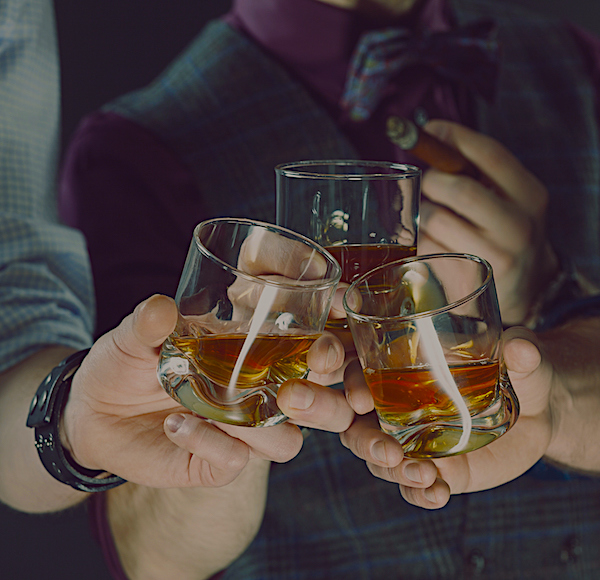
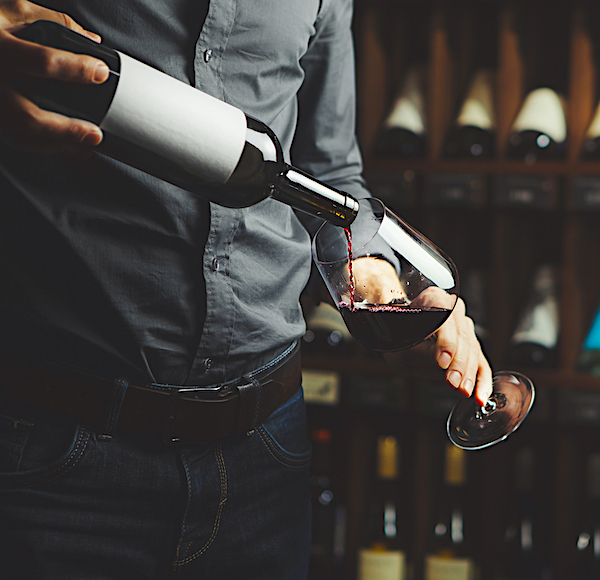
Wine
What Makes Wine So Exquisite
Once thought to be only enjoyed by most posh rich people, wines vary both in their quality and in the quantity they are consumed. Like most great inventions, wine wasn’t invented, but rather discovered. Some believe it was Jesus who first turned water into wine, others say wine was first fermented by the ancient Egyptians. Wine dates back to nearly 8,000 years. It was the one drink which was valued in the ancient world because it was believed to be divine. But whatever the story may be, the truth is, nobody cares who discovered it… the important thing is that, it was discovered.
Whites
While most wines flow easily and steer beautifully, white wines have a light taste ranging from dry, to semi sweet to sweet. Whites, such as, Chardonnay contain tannins from being stored in oak containers and steel to enhance its taste. White wines have been known to pair well with cheese, seafood and poultry. Some of the well known white wine types include, Riesling, Sauvignon Blanc, Pinot Gris, Chardonnay. Well known semi-sweet and sweet wines include, Ice wines, Moscato, Sherry, Tokaji, and Sauternes. White Wine glasses have a many shapes but a smaller mouth reduces the rate of oxidation to preserve the crisp, clean flavor. They are served in longer, wider glasses for a distinct burst of flavor.
Reds
Red wines are made with varieties of dark red and black grape. The main difference between red and white wines is that, the production of red wine includes the skin, as well as the whole grape. The skin adds color and is what gives red wine its rich taste. The cork is sealed into the bottle for years before red wine reaches its full flavor. Red wines also tend to be heavier and complex than their white counterparts, they also tend to be less sweet and are known to emit a pungent and a tangy fragrance. Red wines have been known to pair well with steak, lamb, duck and even chocolate.
Some popular red wines include Zinfandel, Merlot, Pinot Noir, Cabernet Sauvignon, Syrah or Shiraz and Zinfandel. A not so well known red, Malbec is gaining popularity. Apart from these, the charm of the Pinot Noir, the red wine grape of Burgundy, can also be tasted in Henri Jayer Richebourg Grand Cru, Cote de Nuits, France, for a price of $15,398. Red Wine glasses are generally shaped rounder and shaped like a bowl to increase the rate of oxidation.
Alternative Options
Other wine types include blush wines, fruit or country wines, non-alcoholic wines, and sparkling wines.
Rosé Wine
Rose wines are made up of red grapes, while blush wines with a hint of pink are made by blending white and red wine together for a hint of color.
Fortified Wine in Small Bottles
Fortified wines or dessert wines have been fortified by using extra alcohol. These wines are normally not served with any meal, but after retiring from the dinner table. Fortified wines include Sherry, Madeira and Port. This wine is generally served in smaller glasses so the taste and the higher alcohol content does not overwhelm the drinker too much.
Sparkling Wine and Champagne
Sparkling wines are very easy to distinguish because of their bubbles. By far, sparkling wines and champagne are the most popular wines worldwide and are produced in most of the major wine producing regions of the world. While serving champagne in a barbeque would require the use of disposable flutes, at formal occasions, Champagne is best presented in slim tulip-shaped crystal or glass stemware.
Bet You Didn’t Know
While some reds are made for immediate consumption, some white wines can and have lasted for centuries.
Foot treading of grapes is still used in producing a small quantity of the best port wines around the world.
